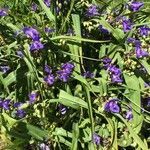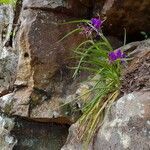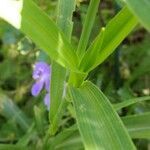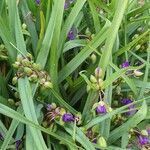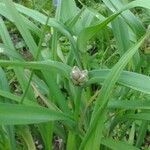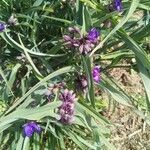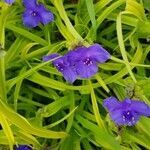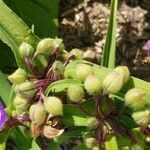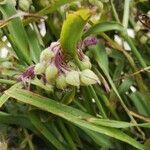Stems straight, erect, 0.5–4 dm at anthesis, glabrous or obscurely puberulent; lvs usually 2–4, elongate, glabrous or nearly so, 5–15 mm wide, rarely wider; bracts often wider and longer than the lvs; cyme terminal and usually solitary; pedicels 15–35 mm, sparsely pilose with eglandular hairs 1 mm; sep 10–15 mm, rather densely villous throughout with eglandular hairs 1–2 mm; pet blue or purple, 12–18 mm; 2n=12, 24. Moist woods and prairies; Me. to Pa., Mich., and Minn., s. to Ga. and Mo. Spring.
A herb. It grows 30-60 cm high. It spreads 50-120 cm wide. It has large clumps of long narrow leaves. They are like grass leaves. They are 15-38 cm long. The flowers are white, pink or violet. They are in small heads.
